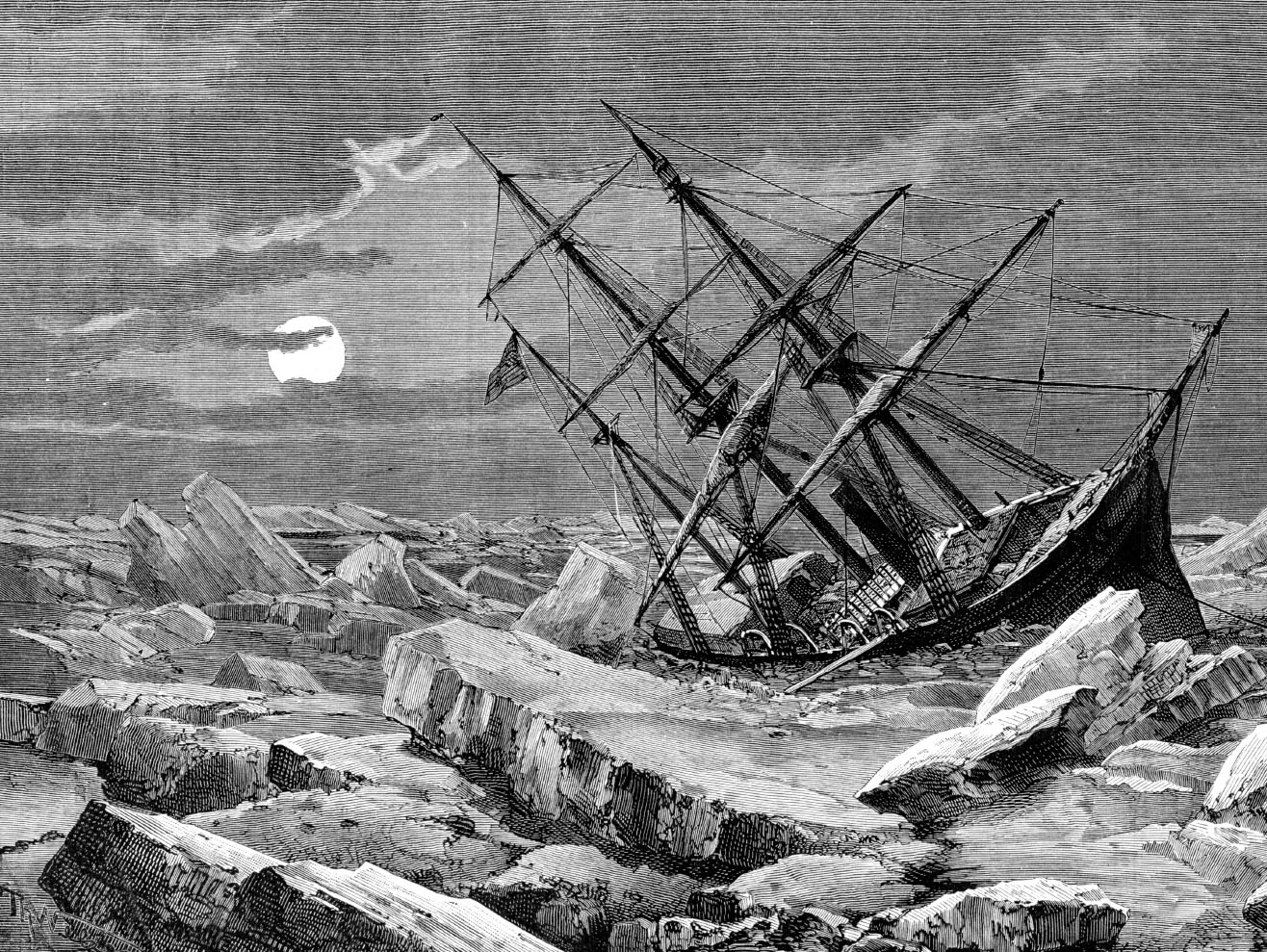
The Jeannette is pounded by Arctic ice.

With a sharp crack and a fierce shaking of the ship, Lieutenant Commander George W. De Long’s worst fear came true. De Long raced up to the Jeannette’s deck, gripping the ladder with both hands as it creaked and swayed.
The ship filled with water and listed to one side. Her masts and smokestacks caved in.
The Jeannette was going under. There was no way to save her now. If the crew hurried, they could salvage enough food and equipment to sustain them for the nearly impossible journey ahead—five hundred miles across a violently shifting ice pack toward a frozen, inhospitable land.
The thirty-three men were already in poor condition. The Jeannette had been frozen fast in the ice of the Arctic Ocean for more than twenty months, and several men were sick or injured. Fresh drinking water was scarce. The men were bitterly cold, always damp, and exhausted.
De Long ordered everyone off the Jeannette and waved farewell to it with his cap. The men rested on the ice—surrounded by dogs, provisions, and equipment—and waited for the ship to sink.
It wasn’t a lack of preparation or courage that had put them in this predicament. Like other explorers before them, these men had a never-turn-back attitude. They were seeking the North Pole—a goal that many had tried to reach, but none had ever attained.
De Long knew that his dangerous quest could cost him his life, but he wasn’t thinking only of himself. He intended to push human knowledge and achievement to its limits. Maybe there were new islands to be discovered, or unknown species of birds and animals. He’d expected to ride a warm ocean current to the pole. Rumors of a rich, tropical polar sea energized his every thought as he planned the expedition.
But all he’d found was ice.
“Should success crown the efforts of the gallant commander, it will be one of the most brilliant geographical adventures ever won by man. The solution of the Northern mystery would be the event of the nineteenth century.”